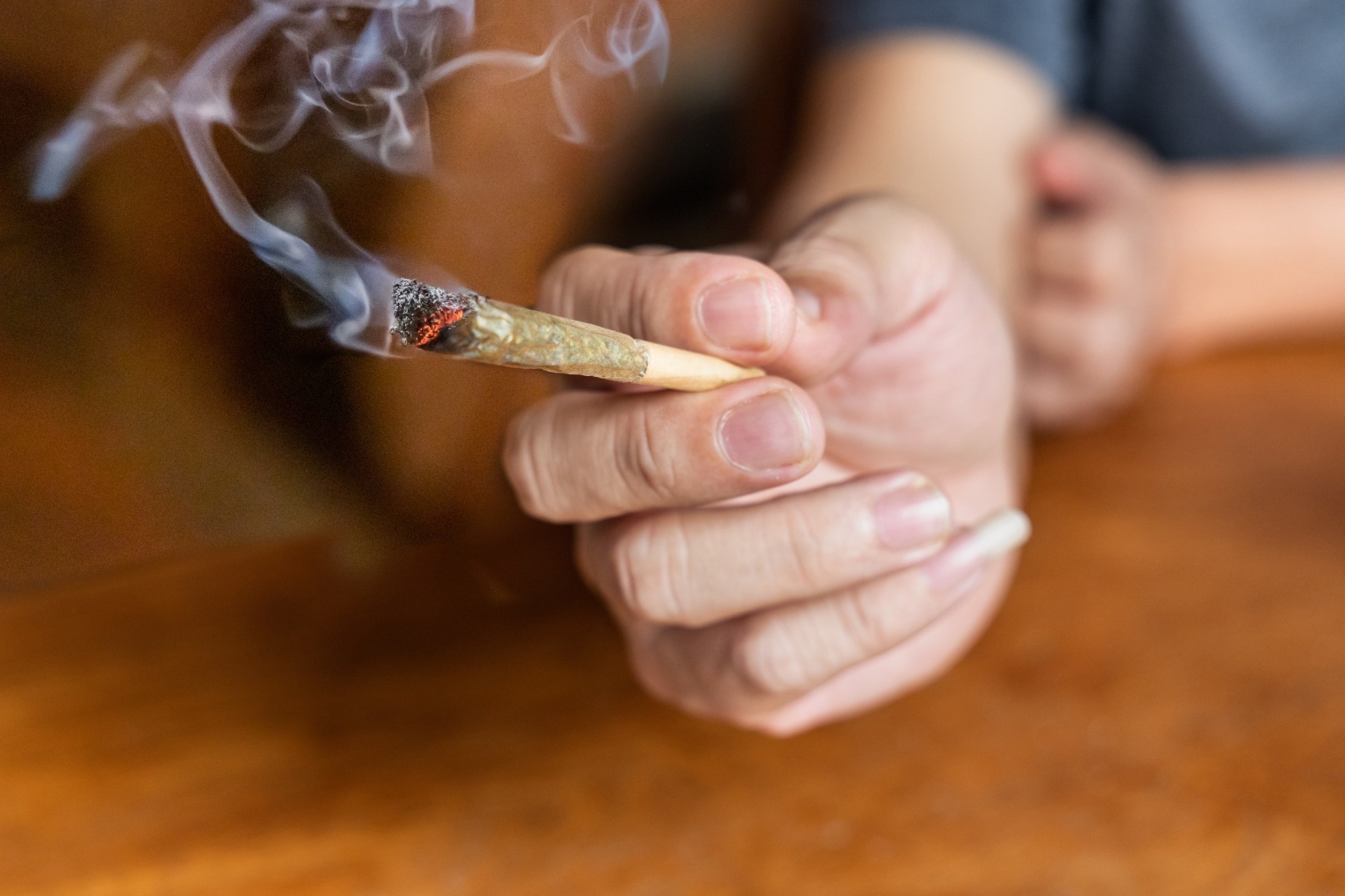Study finds significant secondhand cannabis exposure in children from in-home smoking, emphasizing the need for preventive measures and stricter policies to safeguard their health.
 Study: Exposure to Secondhand Cannabis Smoke Among Children. Image Credit: ThamKC/Shutterstock.com
Study: Exposure to Secondhand Cannabis Smoke Among Children. Image Credit: ThamKC/Shutterstock.com
In a recent study published in JAMA Network Open, a research team from the United States investigated the relationship between cannabis smoking at home and secondhand exposure among children using urinary biomarkers.
They evaluated how in-home cannabis use affects the levels of Δ9-tetrahydrocannabinol (THC) and its metabolites in children. They aimed to quantify the exposure and emphasize the need for preventive measures to safeguard the health of children.
Background
Cannabis use, primarily through smoking, emits harmful chemicals, including carcinogens and fine particulate matter, which can negatively impact respiratory and cardiovascular health.
Secondhand cannabis smoke (SHCS) is a combination of direct emissions and exhaled smoke, and evidence suggests that it may contribute to adverse health effects.
Children, being more vulnerable to environmental pollutants, are at a higher risk when exposed to SHCS. Existing studies have linked caregiver cannabis use to respiratory illnesses in children. Still, most have focused on indirect measures or single biomarkers, limiting the understanding of the extent and impact of such exposure.
Despite the growing use of cannabis, particularly in households with children, research on SHCS and its effects remains limited.
This paucity of data reflects a need to use objective measures such as urinary biomarkers to investigate how SHCS exposure impacts children and to inform policies and interventions aimed at reducing potential health risks for this vulnerable population.
About the study
In the present cross-sectional study, the researchers used data acquired from Project Fresh Air, focusing on households with children under 14 years and resident tobacco smokers in San Diego County. They combined data from air particle monitoring with parental reports of in-home cannabis use to evaluate children’s exposure to SHCS.
Urine samples from 275 children were analyzed for THC and its metabolites, including 11-hydroxy-THC and 11-nor-9-carboxy-THC, which serve as biomarkers for cannabis exposure.
These biomarkers were measured using advanced mass spectrometry methods, and the researchers summed up all the molar equivalents to determine total THC equivalents (TTE).
To estimate in-home cannabis smoking, the study employed a residualization approach, which combined self-reported cannabis use and air particle data and adjusted for other sources, such as tobacco smoke and household activities generating particulates. The researchers also identified daily non-specific smoking events through air particle counts exceeding a set threshold and quantified their association with reported cannabis use.
Additionally, they collected data on air nicotine dosimeters and household demographic factors, including ventilation practices, income, and parental education.
The study employed logistic regression to assess the likelihood of detectable TTE based on in-home cannabis use. In contrast, linear regression was performed to quantify the exposure among children using detectable biomarkers.
Major findings
The results showed that children residing in homes where cannabis was smoked indoors had significantly higher exposure to secondhand cannabis smoke, as evidenced by detectable THC biomarkers in their urine.
Among the 275 children included in the study, 27.3% showed detectable levels of urinary cannabinoids. Furthermore, households reporting in-home cannabis use had five times higher odds of children having detectable TTE levels compared to those without reported cannabis use.
Moreover, for each additional daily cannabis smoking event, the likelihood of detectable urinary TTE in children was found to increase by a factor of 2.5.
Among children showing detectable levels of urinary cannabinoids, higher frequencies of reported cannabis smoking events were associated with greater TTE levels, although this increase was not statistically significant.
The researchers observed that children under six years of age showed similar patterns of exposure, indicating the heightened risk for younger age groups who spend more time indoors.
Although non-specific smoking events captured by air particle monitors contributed to exposure data, reported in-home cannabis smoking provided a more direct association with urinary biomarker detection.
Furthermore, sensitivity analyses confirmed the robustness of these findings across multiple measures of smoking events.
This study highlighted the impact of in-home cannabis use on children’s SHCS exposure, with detectable biomarkers serving as critical indicators of exposure levels. These results also stressed the importance of implementing preventive measures to minimize indoor cannabis smoking, particularly in households with young children.
Conclusions
Overall, the findings demonstrated a significant link between in-home cannabis smoking and increased secondhand exposure in children, as indicated by urinary THC biomarkers.
The study suggested that reducing indoor cannabis use could substantially lower children’s exposure to harmful chemicals present in cannabis smoke. The team also believes that further research is needed to explore the long-term health effects of such exposure and to develop policies that protect children from environmental risks associated with cannabis use.
Journal reference:
-
Tripathi, O., Humberto, P., Sosnoff, C., Matt, G. E., Penelope, Shi, Y., Liles, S., Wang, L., Caron, K. T., Oneill, J., Nguyen, B., Blount, B. C., & Bellettiere, J. (2025). Exposure to Secondhand Cannabis Smoke Among Children. JAMA Network Open, 8(1), e2455963–e2455963. doi:10.1001/jamanetworkopen.2024.55963.https://jamanetwork.com/journals/jamanetworkopen/fullarticle/2829482